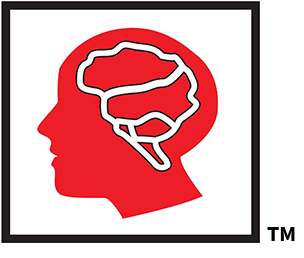Getting the normal Adderall dosage for adults right can feel a bit like figuring out the perfect recipe—it matters more than you might think! Adderall is a medication often prescribed for adults with ADHD, and the dose isn’t just a number your doctor picks out of thin air. Finding the right fit affects everything from focus at work to feeling like yourself around family.
With so much chatter online (and more than a little bit of confusion at the pharmacy counter), I love that you’re taking a closer look at what’s safe and typical. Getting the dosage right means you’re more likely to see the benefits without the unwanted side effects. It’s simple and smart—plus, it definitely brings some peace of mind. Let’s roll up our sleeves and talk about what a normal Adderall dosage for adults really looks like and why accuracy always counts.
What is Adderall and How Does it Work?

If you’ve ever heard someone mention Adderall, you might picture a tiny orange pill that somehow makes focusing at work or school a little less… well, impossible. Adderall isn’t magic, but it does have a science-backed purpose for adults diagnosed with ADHD or narcolepsy. Before we talk numbers and routines (that “normal Adderall dosage for adults” you keep hearing about), let’s get cozy with the basics—what’s actually inside that pill, and how does it help so many people every day?
What Adderall Is: The Simple Story
Adderall is a prescription medication used most often to treat attention deficit hyperactivity disorder (ADHD) and sometimes narcolepsy in adults. It’s made up of two stimulant ingredients: amphetamine and dextroamphetamine. Each of these plays a big role in how your brain handles signals—the kind that help you focus, organize, and even stay awake if you need to.
Think of Adderall like a friend tapping you on the shoulder when your brain starts to drift in the middle of a meeting or if you find yourself falling asleep at your desk in the afternoon. The good news? When used correctly and in the normal Adderall dosage for adults, many people say it opens up daily life in ways they didn’t expect. It’s not a cure, but it can be a serious helper.
Key Ingredients: Amphetamine and Dextroamphetamine
Now, let’s break down what’s inside:
- Amphetamine: This ingredient helps wake up your nervous system. It’s the boost that turns the mental radio up a few notches, bringing clarity and a sense of “I’ve got this!” when the day starts feeling overwhelming.
- Dextroamphetamine: Similar to amphetamine but a bit more focused in its effect, it sharpens attention and keeps distractions at bay. You might think of it as the brain’s gentle nudge toward getting things done.
When these two combine, they work together to keep key brain chemicals active longer. That’s where the magic happens. You start to notice details, conversations get easier to follow, and those nagging distractions fade to the background.
How Adderall Works in the Brain
Here’s the easy version: Adderall boosts the levels of certain natural chemicals in your brain, like dopamine and norepinephrine. These are the messengers that help with focus, motivation, and alertness.
Picture your brain as a busy city with lots of traffic lights. In people with ADHD, some of those lights get stuck on red. Adderall is like a traffic cop, helping the signals flow better and making sure you don’t get stuck in mental gridlock. For narcolepsy, it does a similar thing—helping keep those sleepy signals in check so you feel awake during the day.
Why Adults Use Adderall
Here’s what often brings adults to ask about Adderall:
- Trouble focusing at work or home
- Struggling to remember details or finish tasks
- Feeling overwhelmed by to-do lists
- Issues staying awake or alert, even during important moments
With the normal Adderall dosage for adults, most people find a nice balance. It’s not about becoming a different person, but more about finally having the tools to make life feel possible instead of impossible. And if you’re navigating ADHD or narcolepsy, finding that normal dose is like finally tuning in to a radio station that plays your favorite songs all day long.
Normal Adderall Dosage for Adults: Standard Guidelines
Getting the normal Adderall dosage for adults just right is a little like hunting for your favorite cozy sweater—it needs to fit just so. Too much or too little and, well, things can feel off fast. Most grown-ups just want to figure out what typical really means, especially with prescription changes and more information out there than ever. That’s what this section is all about: clear, real talk about what most doctors recommend, how the numbers break down by type, and how high is too high when safety comes first.
Initial Dosage Recommendations for Adults
Doctors usually start with a lower dose for Adderall, especially if it’s your first time. No one wants to feel jittery or wired, right? The goal from the start is to let your body get used to the medicine at a slow and steady pace.
Most adults start on 5 mg once or twice a day if they’re prescribed immediate-release (IR) Adderall. For extended-release (XR) Adderall—the kind that covers an entire day—the typical starting dose is 10 mg once every morning.
Starting low isn’t just a gentle introduction for your system. It’s a careful way of figuring out how you react—because everyone is a little different. Your doctor will want to know:
- How your focus feels at work or home
- If you notice more energy or feel extra on edge
- Whether you’re able to stick with tasks without getting too jumpy
This early stage can last a week or two. After that, your doctor may slowly raise the dose as your body gets used to the new routine.
Dosage Ranges: Immediate-Release (IR) vs Extended-Release (XR) Adderall
Once the starting period is over, most adults settle into a more regular Adderall routine. Here’s what that tends to look like:
Immediate-Release (IR) Dosage
- Usual range: 5 mg–40 mg per day, split into 1-3 doses
- Each dose may be spaced about 4–6 hours apart
- Some folks use a higher morning dose and a smaller one in the afternoon—especially if evenings have fewer focus needs
Extended-Release (XR) Dosage
- Usual range: 10 mg–30 mg once every morning
- The XR version works all day, so you usually take it just once daily
People aren’t robots. Sometimes, weekends or work changes mean tweaking your schedule. Talk with your doctor if life throws you a curveball.
Different types of Adderall release the medicine at different speeds. That’s why someone might switch from IR to XR or the other way around—whatever matches their daily rhythm best.
Maximum Daily Dosage and Safety Limits
Doctors stick to firm limits with Adderall for really good reasons. The maximum daily dose for most adults is 40 mg per day for IR and 30 mg per day for XR. Going above these numbers increases the risk of side effects like jitters, trouble sleeping, and even more serious health issues.
Here’s a simple way to remember the basics:
- IR Adderall: Most doctors keep it capped at 40 mg a day (split into a few smaller doses)
- XR Adderall: Top limit is 30 mg once daily, rarely more
Factors that could change your dose include:
- Age (those over 65 may need less)
- Overall health, especially heart or mood concerns
- Other medicines you may take
If you ever feel off—racing heart, headaches, or just unlike yourself—tell your doctor. Safety first, always.
Normal Adderall dosage for adults isn’t a one-size-fits-all number. But with a smart, measured approach, most people find a routine that feels right without missing out on the little joys of daily life.
Factors Affecting Adderall Dosage in Adults

If you’ve ever sat across from your doctor and wondered why your friend’s Adderall dose is so different from yours, you’re in good company! Finding the normal Adderall dosage for adults isn’t about fitting everyone into the same box. It’s about matching the dose to your personal story—your body, your day-to-day, and your health history (which is sometimes as unique as your breakfast order). Let’s look at the big pieces of the puzzle that doctors think about each time they write a prescription for Adderall.
Age and Your Body’s Tempo
Age isn’t just a number when it comes to medication. Our bodies change over time, and so does the way we react to stimulants like Adderall.
- Younger adults (think 20s and 30s) may break down Adderall faster. A moderate dose can get them on track without too many bumps.
- Older adults—especially those over 60—often need lower doses. Bodies can be more sensitive. Doctors start slow and watch for side effects like sleep trouble or feeling jittery.
If your birthday candles grow each year, your doctor might gradually adjust your dose to keep things feeling balanced.
Weight and Body Size
Have you ever noticed how one slice of cake fills up your petite friend, but you might reach for another? Medication works much the same. Weight often tips the balance on how much Adderall is just right.
- A smaller frame may only need a lower dose to feel focused and sharp.
- A larger build might need a bit more for the same effect. But doctors never go straight by pounds—they always check in on how you’re feeling.
Health Conditions and Medical History
Life doesn’t come with a reset button. Pre-existing health issues pop up, and Adderall doses shift to match.
Here are a few health spots that can change what’s “normal”:
- Heart conditions: Things like high blood pressure or irregular heartbeat need extra care. Stimulants can rev up your system, so doses are kept low and checked often.
- Mental health conditions: If you have anxiety, depression, or bipolar disorder, Adderall can sometimes sharpen or soften symptoms. Your doctor will listen closely and might suggest more gentle dosing.
- Metabolism: Diabetes or thyroid issues can make your body handle medicine faster or slower. Careful checks help keep things easy and comfortable.
Medication Interactions
Do you have a morning routine with more than one prescription? What plays nice in your medicine cabinet matters—big time. Other meds you take can affect how Adderall feels or how long it lasts.
Common culprits that doctors always ask about:
- Antidepressants
- Blood pressure pills
- Herbal supplements (yes, even those “natural” ones!)
- Over-the-counter cold or allergy medicine
Mix-ups can make Adderall seem too strong or too weak. Always bring your medication list to each doctor visit.
Response to Treatment
Everyone feels Adderall a little differently. Sometimes the first try is spot-on; sometimes your doctor will want to tweak things as you go.
- Some folks feel calmer, focused, and happier in just a few days.
- Others might need a few changes—either more, less, or at a different time of day.
The normal Adderall dosage for adults is all about paying attention to how you feel. Keep track of sleep, appetite, mood, and focus—you’re the expert on you!
Past History of Substance Use
Doctors take a gentle but serious look at personal or family history with alcohol or drug use. Adderall is a stimulant, and some people are at higher risk for misuse.
What this means for your dose:
- Doctors may start lower and move up very slowly.
- Some adults find other treatments work better, or their care team might suggest extra support.
- Open, honest talks with your doctor help build trust and make sure your treatment fits you—not just your symptoms.
The Takeaway: It’s Not One-Size-Fits-All
Getting to that normal Adderall dosage for adults really is like fine-tuning a radio. There’s a sweet spot just for you, no matter what the label says or what your neighbor takes. By paying attention to age, weight, health, and your own daily experience, you and your doctor can craft a plan that fits like your favorite pair of jeans: comfortable, reliable, and just right for you.
Don’t be shy about sharing what you notice. Your best dose is all about your real life, not a chart in a textbook!
Risks of Incorrect Adderall Dosage

Let’s have a heart-to-heart about what can go sideways when your Adderall dose isn’t quite right. The truth is, even with the best intentions, a slip-up in the normal Adderall dosage for adults can bring on more than just an off day. It can mess with your mood, your health, and your ability to enjoy all the good stuff life has to offer. Here’s what you need to know—no sugarcoating, just real talk.
What Happens When You Take Too Little?
You might think less is safer, right? But when your dose is too low, you might as well be taking a multivitamin for all the good it’ll do against real ADHD or narcolepsy challenges. Symptoms just keep on rolling:
- Focus disappears: Tough meetings feel like marathons. Chores pile up. You end the day feeling frustrated and stuck.
- Mood tanks: Constantly missing the mark leaves you on edge or feeling down.
- Routine falls apart: It’s hard to follow plans or keep your head above water at work and home.
The normal Adderall dosage for adults is designed to dial in these symptoms—not wipe them out by force, but give you a gentle nudge so things feel smooth and steady.
What Happens When You Take Too Much?
Too high a dose brings on its own circus—sometimes literally with a racing heart and hands that can’t sit still. Adderall is a powerful tool, not a “more is better” kind of fix. Here’s what can pop up when you cross that line:
- Jitters, anxiety, and panic: You’re bouncing out of your skin, your thoughts race, and sleep? Forget it. Tossing and turning is the new normal.
- Heart trouble: Rapid heartbeat, high blood pressure, even chest pain—none of it feels good. Overdosing increases the risk for scary stuff like arrhythmias (irregular heartbeat) or, in rare cases, stroke.
- Bad headaches and irritability: A too-high dose can turn even a fun day into a grumpy blur.
- Appetite takes a nosedive: Meal times become a chore. You notice your clothes are looser, but not in a good way.
Medical guidance says to never adjust your dose on your own. Any sign of these problems is your cue to talk with your doctor right away.
Dependency and Misuse Risks
Let’s talk honestly—Adderall is helpful, but if you sneak those extra tablets, you could build up a need for it that’s tough to shake. Taking the normal Adderall dosage for adults with regular doctor visits helps avoid the trap.
Think of it like coffee: a cup or two is a treat. Ten cups and you start getting shaky and rely on it just to feel normal. Higher Adderall doses, especially when not supervised, can lead to:
- Strong cravings or urge to keep raising the dose
- Feeling lousy or sluggish when you miss a dose
- Trouble living your normal life without the medicine
Doctors watch for these signs and will adjust your plan if anything feels off.
When Dose Adjustments Are Needed
Life happens. Sometimes your old dose doesn’t work, or you switch jobs, or your sleep schedule changes. Real doctors always guide these adjustments—never friends, pharmacists, or that one website you found at 2am.
Small changes, tracked over time, make all the difference. Here’s how a healthy adjustment works:
- Start low and go slow: Doctors add a bit at a time, checking in on your energy, focus, sleep, and mood.
- Monitor for changes: Blood pressure, pulse, and mental health never fall off the radar.
- Stay in close touch: Your feedback shapes your plan. Your doctor’s advice keeps you safe—and that peace of mind? Worth every check-in.
The Takeaway—Safety First, Always
Getting the normal Adderall dosage for adults right is like seasoning stew—you want flavor, not fire. Too little and nothing changes. Too much and the whole dish goes sideways. Trust your care team to keep things just right, and don’t hesitate to ring them up if something feels off. Your health, happiness, and heart are worth it!
Best Practices for Taking Adderall Safely
Let’s get honest about something: when it comes to taking Adderall, playing by the rules isn’t just polite—it’s the smartest thing you can do for peace of mind. I know how tempting it is to just pop your pill with your morning coffee and move on, but a few little habits make a big difference. The goal? Enjoy all the focus and calm without the messy side effects. Here’s my everyday rule book for getting the normal Adderall dosage for adults right—and making life smoother for everyone in the house.
Follow Your Prescription Like It’s Your Grandmother’s Recipe
Doctors give out clear instructions for a reason, kind of like how grandma’s pie always turns out right if you stick to her steps. Don’t guess, and don’t cut corners.
- Take Adderall only as prescribed. If the plan says “once in the morning,” that’s it! No extra “just in case” doses.
- Stick to the same time each day. This helps your body get into a steady rhythm (and keeps mornings from feeling even more unpredictable).
- Don’t skip or double up. Missed a pill? Don’t take two at once. Just pick up with the next scheduled dose and move forward.
Think of your prescription as the instruction card for a favorite board game. Stick to it—no one has fun when the rules change halfway through!
Keep an Eye Out for Side Effects (You Know Your Body Best!)
I always say, “Listen to your body—it’s chatty when things aren’t quite right.” Not every side effect means disaster, but even the little ones deserve attention.
- Jitters or nervousness
- Headaches that linger
- Trouble sleeping (even when you’re tired)
- Stomach aches or nausea
- A cranky mood that sticks around
Jot these down in a notebook, or even the notes app on your phone. It makes doctor visits so much easier, and you’ll spot patterns you might miss otherwise.
Make Doctor Check-Ins a Regular Thing
There’s nothing like a good heart-to-heart with your doctor to settle worries. Keep appointments on the calendar—just like a date with your favorite old friend.
- Bring your side effect notes. Doctors love those!
- Mention any changes to your day-to-day routine.
- Talk about new meds, supplements, or even big life events. (Stress matters, and so do those little vitamins hiding in your kitchen.)
Your doctor wants the normal Adderall dosage for adults to work for your real life. No detail is too small.
What to Do If You Miss a Dose (Or Take Too Much)
Hey, nobody’s perfect! We all have those days—running late, lunchbox forgotten, and suddenly you realize you missed your pill. Or maybe you doubled up by mistake (which is hard to believe, but happens in a busy house).
Here’s the fix-it list:
- Missed a dose? Skip it if you’re close to the next one. Never double up “to make up” for a missed pill.
- Took too much? Don’t panic, but call your doctor. Keep an eye out for rapid heartbeat, restlessness, or any symptoms that feel new or off.
- Feeling off? Trust your gut. If you start sweating or your heart is racing, call for help—just like you’d grab a neighbor if you smelled gas in the kitchen.
Quick Tips to Build Good Habits
Some of my favorite tricks for keeping Adderall safe and simple fit right into even the busiest day.
- Use a daily pill box (it’s oddly satisfying!).
- Set a daily phone alarm, so you never forget.
- Keep your medicine in the same spot—out of reach of kids and pets, but impossible to miss when you pour your morning coffee.
- Buddy up! If you live with someone, let them know your routine. Two sets of eyes make mistakes less likely.
Getting the normal Adderall dosage for adults right feels a lot like checking the locks before bed: a little thing that keeps everything safer, calmer, and just plain better. When you follow your prescription, track the little stuff, and stay in touch with your doctor, you get more good days and a whole lot less worry.
Conclusion
Finding the normal Adderall dosage for adults truly comes down to what works best for you. It’s not about following a single chart—it’s about working side by side with your doctor to fit your daily life, your body, and your goals. Every story is different, and what helps one person focus might feel too strong or too soft for someone else.
Your best results come from honest talks, listening to your body, and never skipping those check-ins—even if it feels like “just a routine” visit. If something feels off, there’s no shame in raising your hand and asking for guidance. That’s how you protect your health and get the peace of mind you deserve.
If you’re still trying to sort out the right fit, keep reaching out to your care team, tracking how you feel, and being open about any changes. I’m cheering for you—here’s to finding your groove and making every day a little easier! Thank you for reading, and I’d love to hear your thoughts or experiences below.
